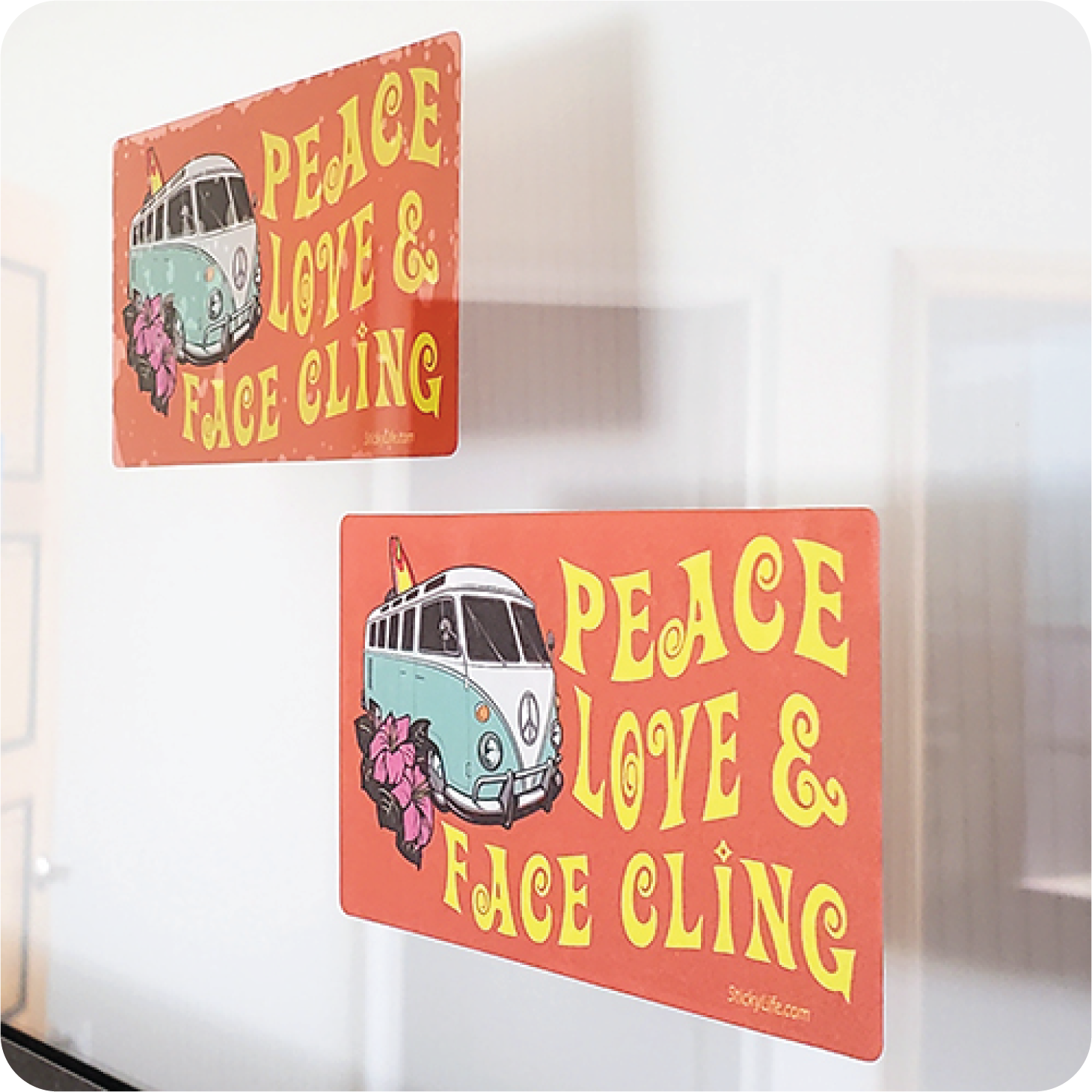Face Cling vs Back Cling

Static Cling products have 2 basic options Back Cling and Face Cling. Learn the difference and see examples when Face Cling and Back clings are used. StickyLife.com produces some of the best Static Clings but it is up to you the customer to determine how you will use the Static Clings. We need to know this information so that we can properly produce your clings for you. The cost is the same regardless of your selection.

Custom printed Static Clings are often used on windows, mirrors, or other high gloss surfaces like Plexiglas as well as some metal surfaces. StickyLife branded static clings may last for 3+ years or longer depending on how many times they are applied, stored and what kind of exposure they receive.
Contrary to popular belief, static clings are not held in place by Static Electricity but rather through vinyl plasticizers found naturally in the vinyl material. An example of this phenomenon can be found with pool floats. If you've ever used an inner tube, pool float, or vinyl beach ball, then you may have experienced the vinyl wanting to stick to itself. This is a result of the plasticizers found within the vinyl material. Over the course of time, the vinyl plasticizers will fade and the vinyl material will begin to dry out or break down, and your static clings will no longer fully stick to your windows or other high gloss surfaces. Sometimes applying water may help rejuvenate your static cling, but this does not always work.
When we print onto Static Cling material, the printed side will no longer "cling" onto your surface due to how the inks interact with the vinyl material. Therefore, you’ll need to indicate if your static clings need to have Face Cling or Back Cling adherence.
What’s the difference between Face Cling and Back Cling?
You’ll want to choose the cling option for your design based on how you intend it to be displayed. We offer two options to choose from for your cling display method.
Face cling display method works best for designs intended to be applied to the inside of a surface to be viewed from the outside, like car windows, glass partitions, store windows, and so on. When we print face clings, the design is printed in reverse order onto clear static cling material. This way, you can apply your clings to a window and see the design through the window and cling material.
Back clings maintain the clinging properties on the back of the vinyl material. They generally work best on mirrors, high gloss painted surfaces like lockers and metal filing cabinets, or interior windows (like an office door). We print back clings the same way you would print anything else, right side up to be viewed head on. Back cling static clings are not intended for exterior vehicle use. Wind resistance and friction at highway speeds will pull a static cling off any exterior surfaces, which could become a road hazard to other drivers. The only time we suggest a static cling for use on exterior vehicle windows is during car shows, parade, or other situations where the vehicle is mostly stationary.
Some customers will naturally want apply their clings to the inside of their vehicle windows. In these cases, you'll want to keep in mind any window tinting that have been applied. Many modern vehicles include factory window tinting that can be so dark, your clings may not be easily seen through the window. For these kind of windows, we usually suggest ordering Vinyl Decals instead. Vinyl decals are made with latex vinyl and are intended for exterior use. By applying decals onto the exterior portion of the window, you will have best visibility of your design. You can read more about the differences between clings and decals on our Decals vs Stickers vs Clings tutorial page.
